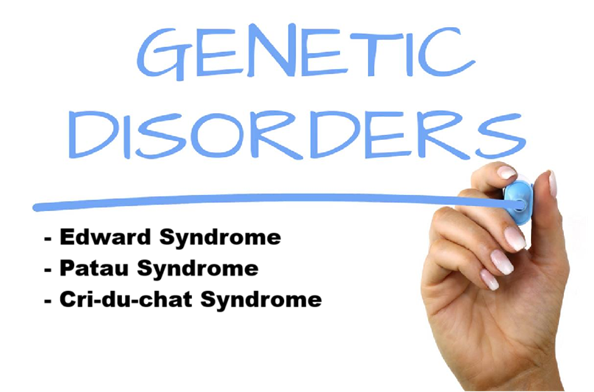Autosomal Genetic Disorder: Edward Syndrome
It is an autosomal genetic disorder caused due to the trisomy of 18th chromosome. This genetic abnormality disrupts normal development and leads to a variety of serious health issues, including intellectual disabilities and physical abnormalities. The syndrome was first described by geneticist John H. Edwards in 1960, after whom it was named. Individuals with this disorder typically have a low birth weight, small head size (microcephaly), clenched fists, and underdeveloped organs. Other common characteristics include heart defects, kidney malformations, and abnormalities in the digestive system. Most affected individuals face significant developmental delays and have a shortened life expectancy, with many infants not surviving beyond the first year.
Edward Syndrome occurs more frequently in females than in males, with a reported frequency of approximately 1 in 8,000 live births. The risk of having a child with this condition increases with maternal age, similar to other chromosomal disorders like Down syndrome. Prenatal screening methods, including ultrasound and amniocentesis, can help in diagnosing the syndrome before birth. Unfortunately, there is currently no cure for Edward Syndrome, and treatment primarily focuses on managing symptoms and providing supportive care to improve quality of life for the affected child and their family.
Symptoms of Edward Syndrome:
- The affected person keeps the fingers tightly clenched against the palm of the hand.
- Other symptoms include small jaws, deformed ears, small mouth, nose and fingers; small sternum and pelvis.
- the patient is mentally retarded and dies within six months after birth
Autosomal Genetic Disorder: Patau Syndrome
It is an autosomal disorder caused due to the trisomy of 13th chromosome. This abnormality was first described by Patau in 1960. The occurance of this genetic disorder is about 1 in 20,000 live births. And, the average lifespan of the affected person is about 4 months.
Symptoms of Patau Syndrome:

- Small head and abnormalities of the face, eyes, and forebrain
- Cleft lips and palate
- Low set deformed ears, and small chin
- Clenched hands
Autosomal Genetic Disorder: Cri-du-chat (Cat Cry) Syndrome
it is an autosomal disorder and it occurs due to the deletion of the short arm of the 5th chromosome. The affected baby cries like mewing of a cat. Hence, it is named as Cri du chat or Cat Cry.
Symptoms of Cri-du-chat syndrome
- Small head with widely spaced eyes
- Moon like face
- Cry like kitten with receding chin
- Congenital heart disease
Conclusion:
All genetic disorders such as Down syndrome, Edward syndrome, Patau syndrome and Cri-du-chat syndrome are related to autosomes. These genetic disorders are the consequence of non-disjunction of chromosomes.

